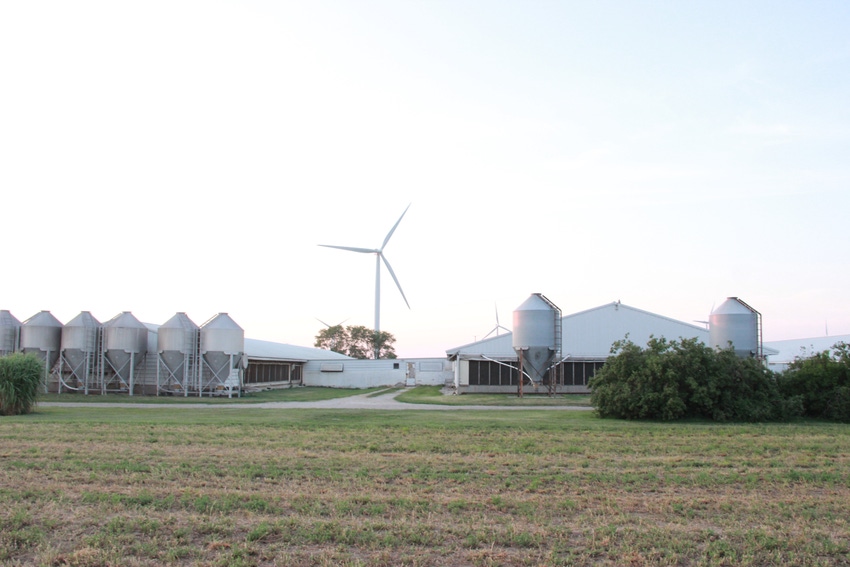Turning the page on a new year
Hog industry leaders to focus on trade, biosecurity, FMD vaccine bank and workforce in 2020.
December 18, 2020

While the turning of the calendar won’t make the challenges of 2020 go away, there is something symbolic about this time of year. Reflecting on the challenges and struggles of the pork industry this year can be daunting. However, I’m also confident that 2021 will be a year of significant opportunities for our nation’s hog farmers.
Many things changed in the last year, but the commitment hog farmers have to their pigs, people, and communities hasn’t wavered. It is this unwavering commitment, even in the face of unforeseen challenges, that makes for such an impactful story. With new government officials next year at the local, state, and national levels, the Minnesota Pork Producers Association (MPAA) and the National Pork Producers Council (NPPC) will help ensure they understand the vital role the pork industry plays in rural communities and the nation’s economy. Keeping pork producers’ priorities top of mind for legislators and the new administration will be our focus in the new year.
One of the top issues next year will continue to be trade, as it remains crucial to the continued success of the U.S. pork industry. Specifically, MPAA and NPPC are advocating for the U.S. to re-join the Comprehensive and Progressive Trans-Pacific Partnership (CPTPP). After the U.S. withdrew from TPP, the remaining countries formed a new trade agreement, CPTPP, leaving the U.S. pork industry at a competitive disadvantage in the region. The CPTPP trade agreement includes Australia, Brunei, Canada, Chile, Japan, Malaysia, Mexico, New Zealand, Peru, Singapore, and Vietnam, which are among some of the largest pork-consuming nations in the world.
Re-entering CPTPP would provide significant, new market opportunities for U.S. exporters, promoting economic growth in the Asia-Pacific region and expanding demand for U.S. food and agricultural products among nearly 500 million consumers in CPTPP-partner countries.
U.S. pork producers will also be focused on expanding trade in numerous other ways, such as the free trade agreement negotiations with the U.K., and bilateral initiatives with nations such as Vietnam, the Philippines, Ecuador, India, Indonesia, South Africa, Brazil and Jamaica— markets which are completely closed or only partially open to U.S. pork exports.
Turning to domestic issues, pork producers will continue to strengthen biosecurity at our borders to prevent African swine fever (ASF) and other foreign animal diseases (FADs) from entering our country. NPPC and MPAA will work to ensure U.S. agriculture inspectors at our borders and ports are fully funded. They are our first line of defense, yet due to the recent economic downturn and COVID-related travel restrictions, there has been a significant reduction in the collection of user fees that pay for these agriculture inspectors. If not addressed, there could be a $630-million funding shortfall by the end of September 2021.
Keeping all FADs out of the country is critical, and we need to ensure agriculture inspectors are fully funded.
The industry is also keeping a close eye on the progress at USDA in strengthening its Foot-and-Mouth Disease (FMD) vaccine bank. The establishment of a robust FMD vaccine bank has been a top, long-term priority for NPPC, which was instrumental in advocating for its establishment as part of the 2018 Farm Bill. Currently, the USDA, which has prescribed vaccination for dealing with an FMD outbreak, does not have access to enough vaccines should an outbreak occur. Earlier this year, USDA announced the first significant purchase for its FMD vaccine bank. We will continue working to ensure the FMD vaccine bank is adequately stocked.
In Minnesota, MPPA was successful in lobbying the state legislature to make investments in equipment and software for the Veterinary Diagnostic Laboratory at the University of Minnesota. This investment will help the lab increase its testing throughput by two and a half times and allow for surge capacity in the event of a FAD outbreak.
Pork producers will also focus on bolstering our collective workforce. Rural communities in Minnesota and throughout the country are made more vibrant by the pork industry, and that includes the people who work on those farms. Pre-pandemic, Minnesota’s top pork-producing counties were also those with the lowest unemployment rates in the state. There simply are not enough people to fill all of the jobs. Pig farmers know that raising and caring for healthy pigs starts with great people.
The U.S. pork industry relies on foreign labor and needs a stable workforce. Unfortunately, existing visa programs are designed for seasonal labor, and taking care of pigs is a full-time, year-round job. Therefore, U.S. pork producers and other livestock farmers need the H-2A visa program to be revised to include year-round agricultural workers and for USDA to have oversight. Restricting foreign workers hurts U.S. agriculture, as these jobs will not be filled by U.S. citizens due to declines in rural population growth, where most farms and packing plants are located.
These are just a few of the many top issues for U.S. pork producers in the new year, and NPPC and MPAA will continue to tenaciously work on behalf of pork producers to ensure the continued growth of one of the most vibrant sectors of the U.S. economy.
Source: National Pork Producers Council and Minnesota Pork Producer Association, is solely responsible for the information provided, and wholly owns the information. Informa Business Media and all its subsidiaries are not responsible for any of the content contained in this information asset.
You May Also Like



